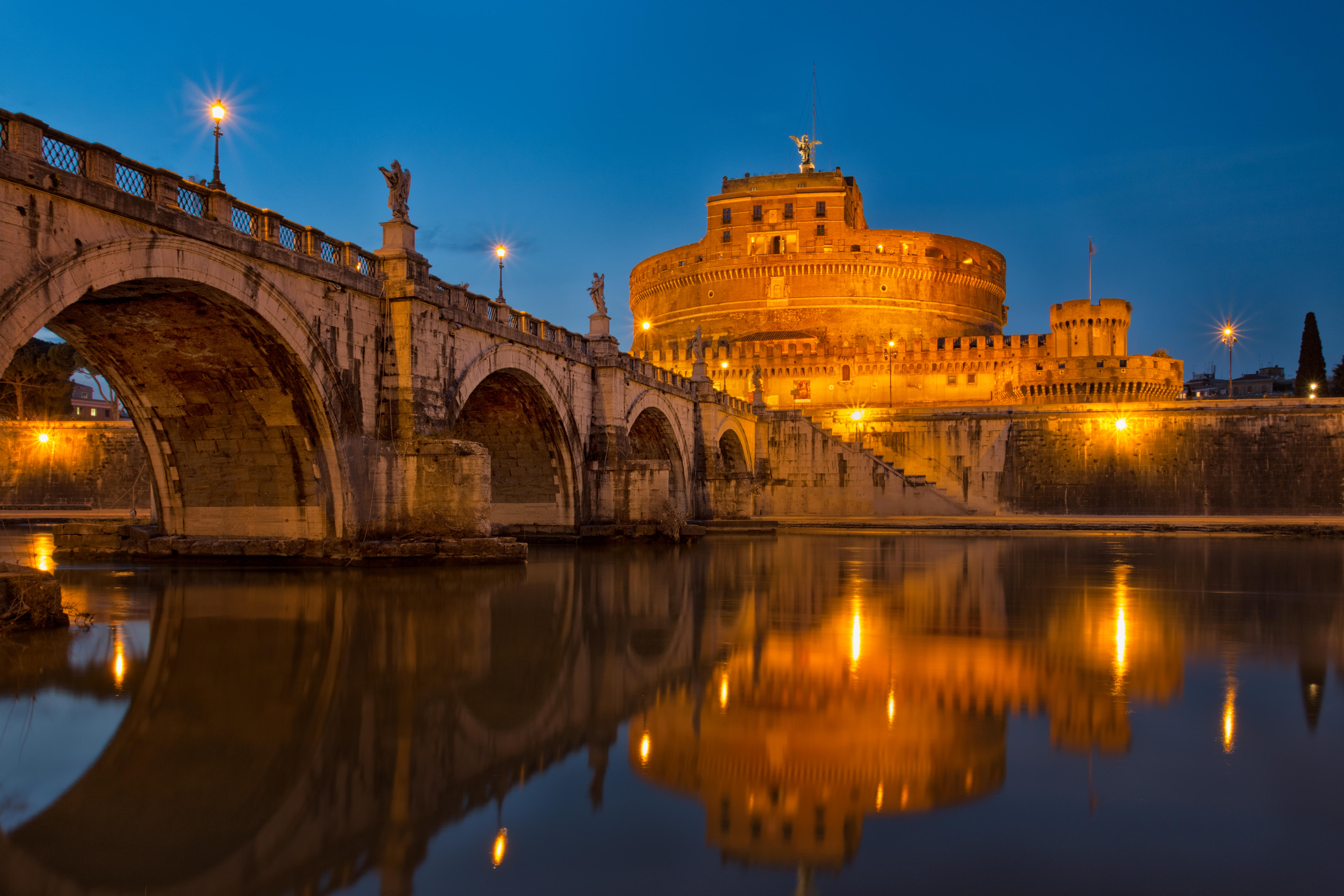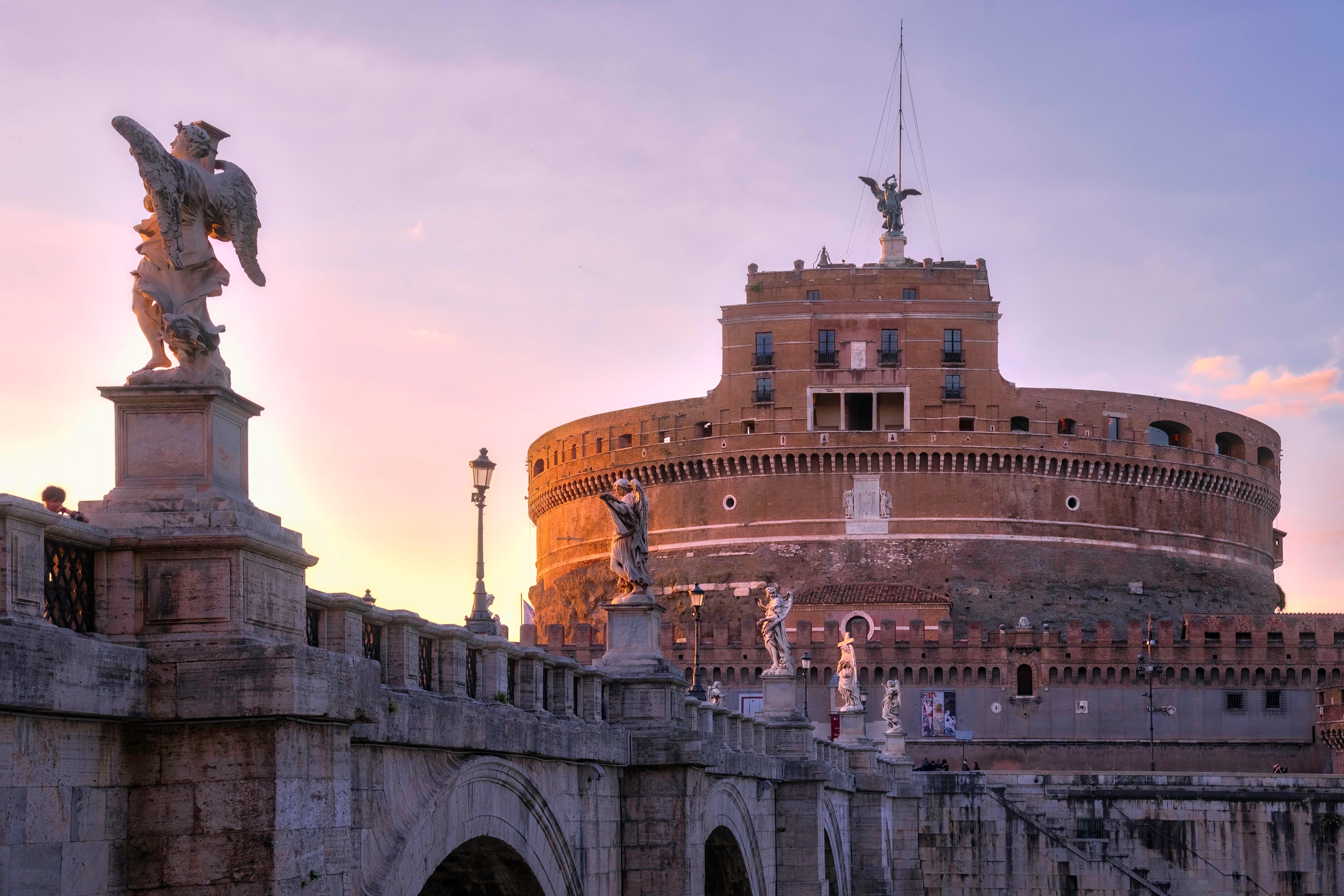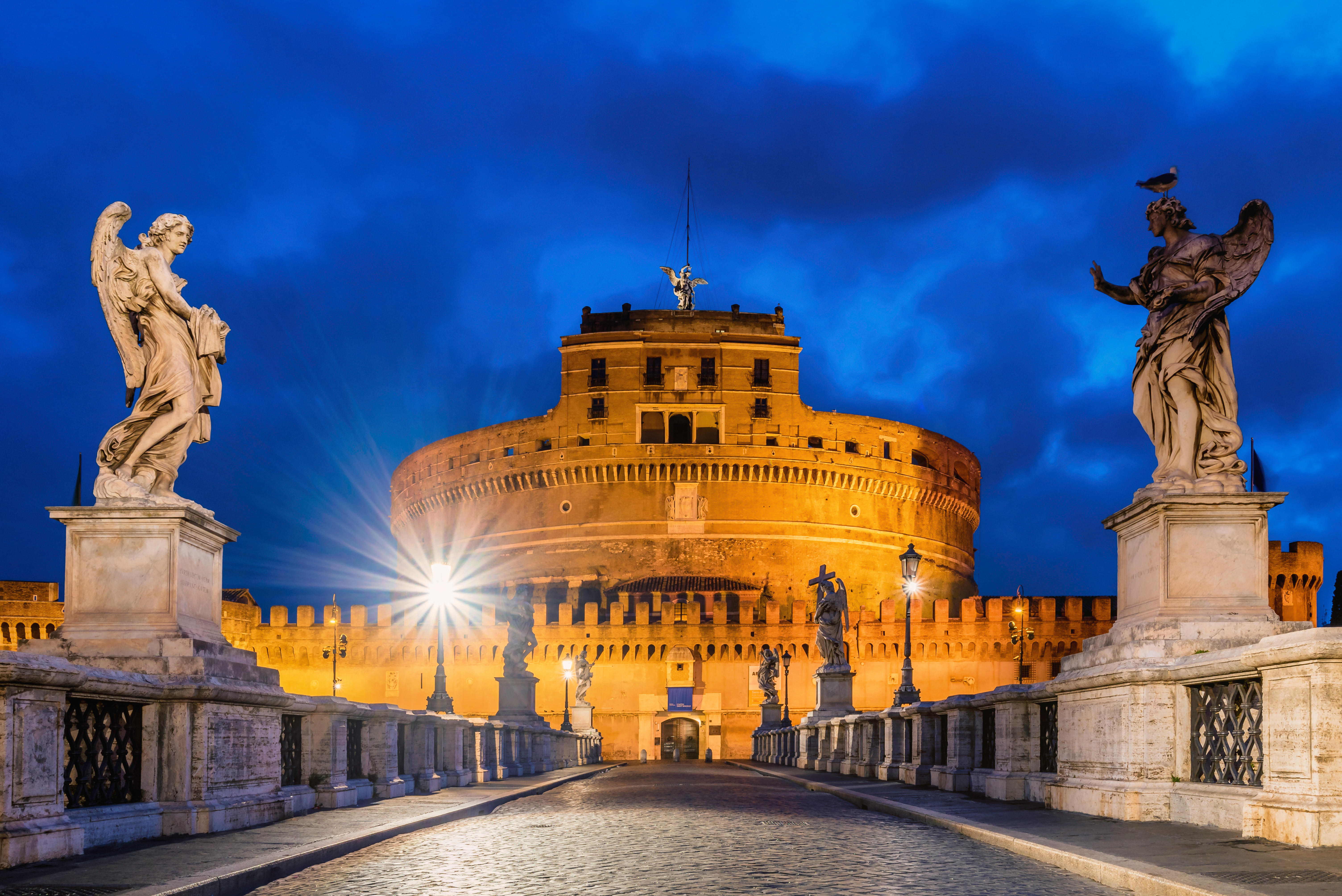Castel Sant'Angelo: Eternal Fortress on Tiber
History of Castel Sant'Angelo
The history of Castel Sant'Angelo is fascinating as the building's erection officially started in the year 135 under the supervision of Emperor Hadrian, who planned to use it as a tomb for himself and his family. After being completed in the year 139, it quickly changed into a military structure that would subsequently be merged into the Aurelian Walls in the year 403. Pope Gregory, I saw Saint Michael the Archangel standing on top of the castle in the year 590, marking the end of the pandemic as a massive plague outbreak destroyed the city. The structure is topped with an angel statue in honor of the encounter.
In order for the Pope to flee in the case of danger, a fortified 800-meter passage between the castle and Vatican City was created in the year 1277. Pope Clement VII sought sanctuary in the stronghold during the sieges of Rome that took place in 1527. Castel Sant'Angelo History tells us a lot about ancient stories about how it was planned to be built and later on became a mark of importance in the history of Rome.
Architecture of Castel Sant'Angelo
The architecture of Castel Sant Angelo was originally ordered and built as a tomb by the Roman Emperor, Hadrian, for himself and his family. Later, the popes utilized the structure, which is now a museum, as a fortification and castle. Rome's highest structure at one point was the Castle. The building was transformed into a castle by the popes starting in the 14th century. Pope Nicholas III built the Passetto di Borgo, a covered, fortified passageway that connected the castle to St. Peter's Basilica. During the Sack of Rome, Pope Clement VII sought sanctuary in the castle from Charles V's Landsknechte's assault.
Features of Castel Sant'Angelo
Hadrian, the Roman emperor, originally built Castel Sant'Angelo as a tomb. The mausoleum for Hadrian and his successors was housed in this structure, which also served as their tomb. In fact, the engineering of the Augustus Tomb, which had been built a century earlier, served as the basis for the design and construction of Hadrian's mausoleum. Under the direction of the emperor himself, the building of Hadrian's tomb started in 123 AD and was finished in 139 AD by Antoninus Pius, Hadrian's successor. A 64 meters wide cylindrical colonnaded drum was constructed above a 292 feet wide square base that served as the mausoleum's foundation. A tumulus that had a statue of Hadrian on a chariot perched atop it entirely around the drum.
Hadrian's Mausoleum was fortified between 270 and 275 AD with the construction of the Aurelian Wall. The tomb had changed its name at this point to Castel Sant'Angelo, so from this point forward the structure was progressively transformed into a fort. The papacy took control of this citadel in 1277, and the pope utilized it as a fortified haven whenever he was in danger.A covert bridge known as Passetto di Borgo connected Castel Sant'Angelo to Vatican City. In order to evade Charles de Bourbon's troops in 1527, Pope Clement VII and his Swiss Guards utilized this route as cover. The architecture of the Papal Refuge is a must-watch as it showcases how a tomb became a fort representing a cover for the guards to avoid the troops.
The Passetto di Borgo, or Passetto, is another name for Er Coridore De Borgo (the Corridor of Borgo), as it was known to the Romans of papal Rome. It is comparable to the elevated and fortified portion of the Vatican Walls that extends from the Apostolic Palace of the Vatican, commencing from behind the colonnade of Bernini, through via dei Corridori and via Borgo Sant'Angelo, and terminates in Castel Sant'Angelo.
To defend the military camp that the barbarian Totila established in this region of the city about the year 547, it was a component of a defensive system that stretched from the base of the Vatican Hill to the Mausoleum of Hadrian. The structure, which has an irregular form and a low elevation, was constructed with large, roughly squared blocks and is still partially visible next to Porta Castello. To safeguard the St. Peter's Basilica and the surrounding structures, Pope Leo IV (847-855) constructed a city wall that was about 5 meters high and included a promenade. Wherever feasible, he made use of them which was before architecture that would eventually be used to build the Passetto as we understand it to establish it.
Do Checkout: Best Places To Visit Near Castel Sant Angelo
Ponte Sant’Angelo originally known as Pons Aelius, Ponte Sant'Angelo was constructed in 136 AD by the Roman emperor Aelius Hadrian to link the city to the entrance to his tomb, the modern Castel Sant'Angelo. Over the years, this bridge was witness to a number of significant occurrences. Traffic across the bridge had to be controlled in the fourteenth century during the first Holy Year declared by Pope Boniface the Eighth due to the enormous numbers of pilgrims. Dante Alighieri claims that two opposing pathways separated by a row of ticket booths were made on the bridge and used as a shortcut from the city to Saint Peter's.
Instead, numerous people drowned in the river during the Holy Year of 1450 when the bridge's rails collapsed as a result of an accident caused by the white mule carrying Pope Nicholas the Fifth. The bridge and the area in front of it served as the scaffold exhibition.
Must Read: Tips To Visit Castel Sant Angelo
Plan Your Visit to Castel Sant’Angelo
Timing:
- The Visit to Castel Sant’Angelo Rome is open from Monday through Wednesday from 9:00 am to 7:30 pm and the ticket office closes down at 06.30 pm.
- From Thursday through Sunday it is open from 9:00 am to Midnight, and the ticket office closes down at 11 pm.
Explore Now: Entrances At Castel Sant Angelo
By walk: If you're in central Rome, you can easily walk to Castel Sant'Angelo. It is approximately a 10-15 minute walk from popular areas like Piazza Navona or the Vatican.
By bus: Several bus lines serve Castel Sant'Angelo, including buses 40, 46, 62, 64, and 916. Check the local bus schedules and routes for the most convenient option.
By train: Since Castel Sant'Angelo is located in the heart of Rome, there is no direct train station. However, you can take a train to Roma Termini, the main railway station, and then proceed by bus or walk to reach the castle.
You May Like: Castel Sant'Angelo National Museum
Book Castel Sant Angelo Tickets
Marvel at centuries of ancient history within the castle walls at the museum
Explore 5 floors of the magnificent Castel Sant'Angelo Museum by booking your skip-the-line ticket
Enjoy stunning views from the city, river, and sunset from the terrace of the castle
Learn about the museum's past and how it served as a fortification against Barbarian attacks on the city
- You will have to climb a series of stairs to reach the panoramic terrace.
- Participants are not allowed to carry any sharp object, lighter, luggage bag, alcohol, knife, etc.
- All foreign nationals must share their passport and visa details at the time of arrival.
- ID proof is mandatory for each individual guest at the time of arrival.
- Age policies change according to the package. Please go through the policies in the package before booking.
- Please note that the time slots may be subject to slight variations, and we will allocate a time slot available within a 30-minute window before or after your initial selection.
FAQ's
Why is Castel Sant'Angelo important?
Hadrian's original tomb, Castel Sant'Angelo, also known as Hadrianeum or Sepulcrum Antoninorum, is a building in Rome, Italy, that afterward served as the Antonine emperors' last resting place until Caracalla. Built between AD 135 and 139, it was transformed into a stronghold in the 5th century.
Suggested Read: Inside Castel Sant Angelo
What is inside Castel Sant’Angelo?
Inside Castel Sant’Angelo one shall find the renowned Hadrian's Tomb, the papal palaces, the castle, the execution area, well-preserved paintings, and many more attractions to explore inside Castel Sant'Angelo in Rome one shall come to know about how the city of Rome has changed in the last 2000 years.
When was Castel Sant’Angelo Rome built?
In 135 AD, the Castel Sant'Angelo in Rome was initially constructed as the tomb of the Roman emperor Hadrian. Eventually, this tomb was transformed into a military facility.
Click Here To Book Now: Castel Sant'Angelo Tickets
What is Castel Sant’Angelo Rome?
The grave of Emperor Hadrian is located in the Castel Sant'Angelo in Rome. It has a history of acting as a jail and stronghold for the papal palace. The museum is well-known today for its historical and cultural significance.
Must Checkout: Statues At Castel Sant Angelo
Are audio guides available with Castel Sant’Angelo tickets?
Yes, audio guides are available with Castel Sant’Angelo Tickets.
Where is Hadrian’s Tomb?
The remnants of the stone defenses the Roman Empire erected after conquering Britain in the 2nd century A.D. are known as Hadrian's Wall. Over 70 miles of the north English countryside were covered by the original construction.
Must Read: Best Restaurants Nearby Castel Sant Angelo
What is Castel Sant'Angelo Rome used for now?
The edifice later doubled as a military headquarters and prison when the popes utilized a portion of it as a prison. When work on the castle's restoration started in 1901, military usage came to an end. A military history museum presently occupies a portion of it.
Checkout Now: Castel Sant Angelo Nearby Cafes
Does Castel Sant'Angelo Rome belong to Vatican City?
No, the Castel Sant'Angelo is managed by the National Museum Dept. of the Rome City Council and belongs to the Republic of Italy.




